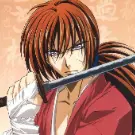Every era bears unique cultural images and symbols, reflecting the period's contemplation of art, society, culture, and technological transformations. Born in the 20th century, Superman, as the "savior" of pop culture, mirrors people's expression and pursuit of their times.

Superheroes aren't merely comic book characters. Through their storyline, you glimpse significant world events and technological breakthroughs. They serve as spiritual nourishment for fans and scholars alike, with various artists, comic book writers, scriptwriters, and film directors continuously shaping them in new or traditional ways within their virtual universes.

Superman's image originated in 1933, created and drawn by Jerry Siegel and Joe Shuster, in Cleveland. The character's first version, published in black and white, depicted a bald villain with telepathic abilities and aspirations for world domination.

Subsequently, amidst the Great Depression and the nascent New Deal, the creators reimagined Superman into the mythological hero. This design was inspired by actor Douglas Fairbanks for the physical appearance and comedian Harold Lloyd for the secondary personality of Superman—forming the classic character of the mild-mannered Clark Kent (a combination of actors Clark Gable and Kent Taylor's names), his alias on Earth.

Superman's attire drew from the look of "Flash Gordon" and traditional circus strongmen, featuring a striking contrast between a tight-fitting suit and outward shorts. Additionally, Jerry Siegel and Joe Shuster added a large "S" logo to his chest, adorned him with a cape, employed the red-blue color scheme of the American flag, and replaced white with gold.

Fritz Lang's science fiction film influenced the city of "Metropolis," where Superman resides. The primary comic faced multiple rejections from "Action Comics" before finally being published on April 18, 1938, becoming an instant hit among the masses and leading to its eponymous comic a year later.


On February 12, 1940, "The Adventures of Superman" surpassed comic books, emerging as a radio drama, airing two to five times weekly until 1951. This radio program featured the iconic lines voiced by Collyer, the radio play's narrator:
"Narrator: Boys and girls, your attention please! The Blank Corporation presents a brand new adventure program featuring the thrilling adventures of an incredible personality! Faster than a speeding bullet. More powerful than a locomotive. Able to leap tall buildings in a single bound.
Man 1: Look! Up in the sky! It's a bird!
Woman 1: It's a plane!
Man 2: It's Superman!"
During this time, Superman appeared on children's cereal boxes and battled the Ku Klux Klan in "The Clan of the Fiery Cross" radio drama.


In the 1940s, Superman-animated shorts began to surface. The 17 Superman cartoons produced by Fleischer Studios under Paramount are considered milestones in animation history, tripling the budget of previous short films and premiering in theaters. Unlike Disney and Warner Bros., Fleischer Studios' animators utilized live-action sequences as references, using Max Fleischer's invention of the rotoscope for a more realistic animation effect. The studio's location in New York added an authentic big-city vibe to the animated Metropolis.

Actor Ray Middleton portrayed Superman for the first time at the 1940 World's Fair. By 1948, the first live-action Superman serial debuted, enjoying tremendous success.

Shot in black and white, the series starred actor Kirk Alyn, with art director Paul Palmentola crafting scenes revolving around Superman, enabling his aerial escapades. The flying sequences created by Disney artist Howard Swift often repeated several times across episodes due to budget constraints.
Superman's Evolution (2/2) | A Visual Journey through DC Comics' Heroic History








Share your thoughts!
Be the first to start the conversation.